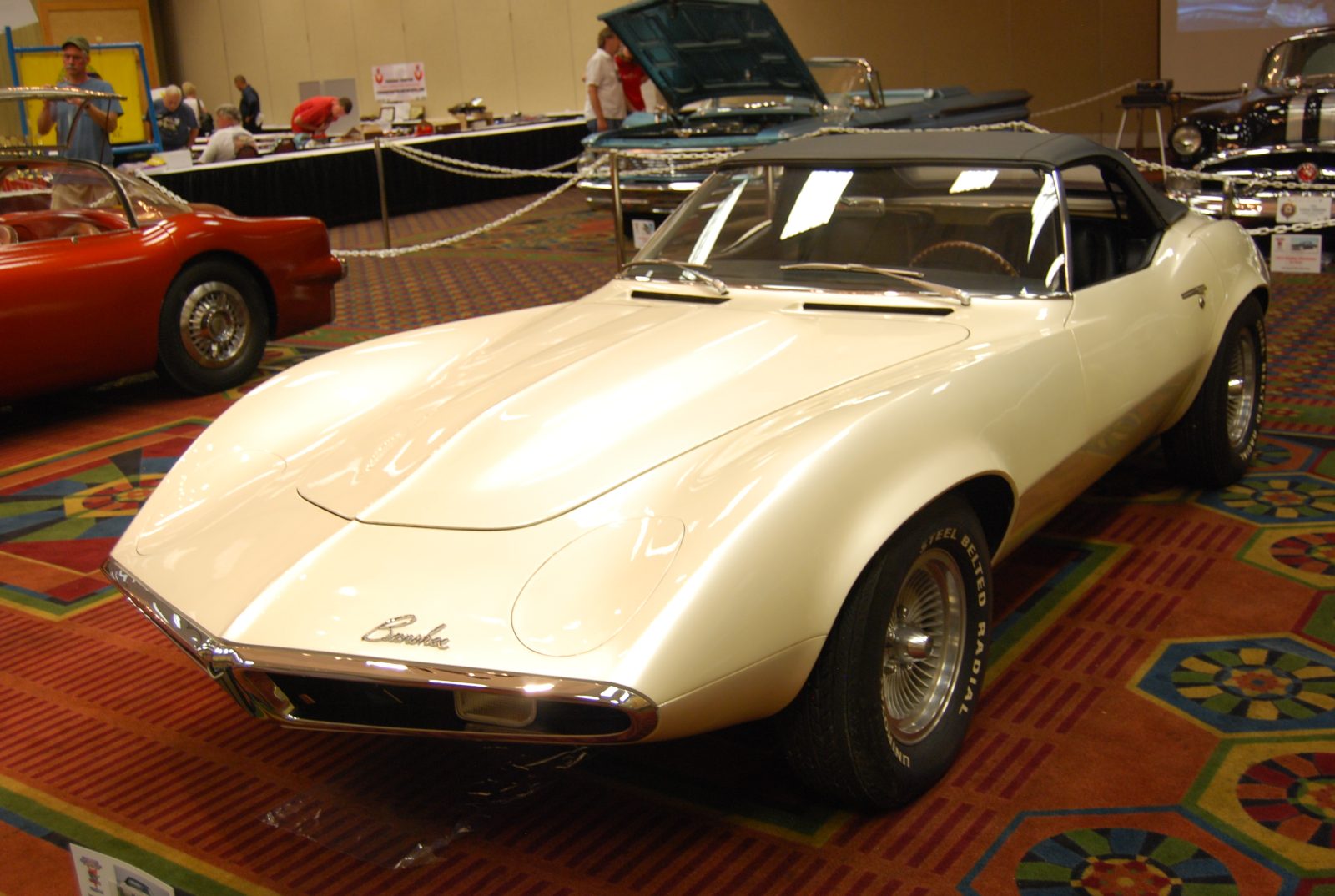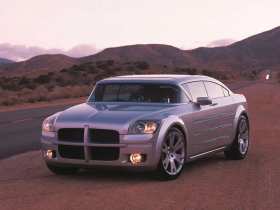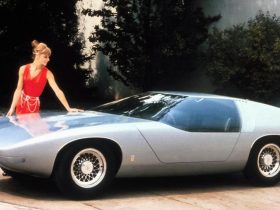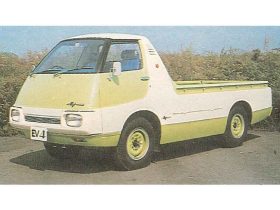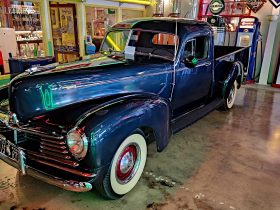In the 1960s, the muscle car era was just getting started. General Motors had previously shown a concept series called Firebird in the 1950s. To continue that theme, and to add performance as a motif for the Pontiac brand, the Banshee series was created.
The first of the Pontiac Banshee cars debuted in 1964 and 1965 as three concepts under the XP-833 and XP-851 tags. The “Banshee” name was added later, having been previously considered for some Camaro concepts that eventually became the Firebird series of production cars.
The XP-833 was debuted as a silver-colored hardtop powered by a straight six engine. Followed by a white convertible model (pictured above) that came with a V-8 powerplant. A four-seat Banshee called the XP-851 came shortly after the originals, but was not widely shown.
The styling for the Banshee models was eventually a cue for the third-generation Corvette that came a few years later. The last Banshee concept, the XP-798, unveiled in 1966 as a more European-styled touring car design. A four-seat model, the XP-778, was also introduced as a Corvette competitor.
That potential competition, however, is what doomed the Banshee series from ever becoming a production reality. General Motors’ executives saw the idea of competing with both the Corvette and the Camaro as a conflict of interest, relegating the Banshees to being only concepts.
The later concept X-778 and XP-798 utilized a 421 V8 and four-wheel independent suspension. Then head of design, John Delorean, put the Banshee name on these concepts to associate them with fighter planes–a Delorean hallmark. It was then that engineer Bill Collins took leftover Banshee badges and applied them to the previous XP-833 and XP-851 concepts to combine the series under one name.
The Banshee II appeared in 1968, following up with the earlier XP-833 design. This model used fiberglass in an aerodynamic design on top of a stock Firebird chassis and body. It was black with a black interior and then later got repainted to white. Flush wheel covers, deep louvers on the hood, short greenhouse glass, and a low ground clearance were standouts in the Banshee II’s design. A 400 CID V8 powered this concept.
Then in 1974, another Banshee appeared, the Banshee III. This concept became a forerunner for the Pontiac Trans-Am to come shortly afterwards. It was developed from, but not copied from, the Pontiac Firebird. It used the same platform, but changed bodywork to be more aerodynamic and included covered headlamps and the side glass was fixed in place with a “toll window” access panel. Red leather interior upholstery and a 455 CID Super Duty V8 engine powered it.
The same vehicle reappeared in 1976 with a few body styling updates, mostly at its rear end, showing a more production-ready model that never came to be.
The final Banshee was the Banshee IV, a very 1980s “supercar”-like design with a large rear quarter and a fast-and-low motif. Its fiberglass bodywork was meant to look futuristic with a head-up display on the windscreen and an array of video displays on the dashboard. Buttons adorned every available surface inside this concept, making it look more like an over-complicated aircraft cockpit than that of a car.
The design of the Banshee IV eventually morphed into the fourth-generation Firebird and Camaro. Those, of course, dropped most of the electronics and buttons and included rollup side windows.
The Pontiac Banshee concepts are now in private museums and collections. Several copies of them have been seen as well, including a version of the IV (build on a Dodge Stealth) for the 1991 Knight Rider 2000 movie. Both Revell and Hot Wheels built versions of the Banshee IV as 1:64 scale models and the Banshee IV concept itself appeared in the movies Back to the Future II and Demolition Man. The XP-833 Banshee concept has appeared in the CSR Classics drag racing game.
The original Banshee concept coupe was owned by a General Motors employee until his death in 2006 and since has been seen at auction multiple times.


